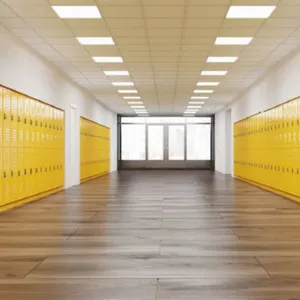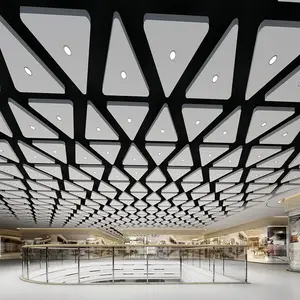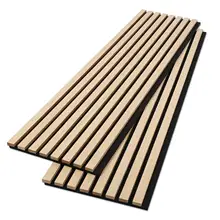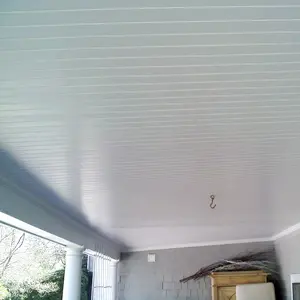The world of interior design has seen a surge in the use of PVC ceiling panels. As a popular alternative to traditional plaster and painted ceilings, PVC ceiling panels offer a host of benefits that make them a top choice in residential and commercial fit-outs.
Understanding PVC ceiling panels
PVC, or polyvinyl chloride, is a type of plastic material known for its durability and versatility. PVC ceiling panels are created from this plastic material and come in a variety of designs and sizes. They are often used in place of traditional ceiling materials such as plaster or painted surfaces. PVC ceiling panels are also seen as an affordable and practical alternative to other ceiling materials such as mineral fiber tiles.
Types and features of PVC ceiling panels
There are various types of PVC ceiling panels available in the market today, each offering a unique aesthetic and functionality. PVC beadboard ceiling panels, for example, provide a classic look and are often used in traditional or vintage-inspired interiors. On the other hand, PVC ceiling tiles 2x4 are typically used in commercial spaces due to their larger size and ease of installation. They can quickly cover a large area, making them ideal for businesses looking for a quick and efficient ceiling solution. Another popular type is the PVC drop ceiling tiles. These are ideal for areas where you might need access to the space above the ceiling, such as in basements or commercial buildings with overhead plumbing or wiring.
One of the primary features of PVC ceiling panels is their durability. Unlike traditional ceiling materials that can chip, crack, or stain over time, PVC ceiling panels are resistant to these common issues. This is due to the plastic material they are made of, making them a long-lasting solution for ceilings. Another notable feature of PVC ceiling panels is their moisture resistance. This makes them ideal for use in bathrooms, kitchens, and other areas prone to high moisture levels. The use of plastic ceiling panels in these areas helps prevent the growth of mold and mildew, contributing to a healthier living environment. The variety of designs and finishes available is another attractive feature of PVC ceiling panels. From PVC ceiling planks that mimic the look of wood to glossy finish tiles that provide a modern and sleek look, PVC ceiling panels cater to a wide range of design preferences.
Materials and construction of PVC ceiling panels
As the name suggests, the primary material used in the construction of PVC ceiling panels is polyvinyl chloride or PVC. This type of plastic is known for its durability, flexibility, and resistance to various environmental elements. In addition to PVC, these ceiling panels may also include other materials to enhance their features. For instance, some plastic ceiling tiles may be reinforced with fiberglass or other materials to increase their strength and longevity. The construction process of PVC ceiling panels typically involves the extrusion of PVC into the desired shape and size. The resulting product is a lightweight, easy-to-handle panel that can be installed with minimal effort.
PVC ceiling panels offer a versatile, durable, and aesthetically pleasing solution for ceilings in a variety of settings. Whether for a residential home or a commercial building, these panels provide a host of benefits that make them a popular choice in interior design.











































 浙公网安备 33010002000092号
浙公网安备 33010002000092号 浙B2-20120091-4
浙B2-20120091-4